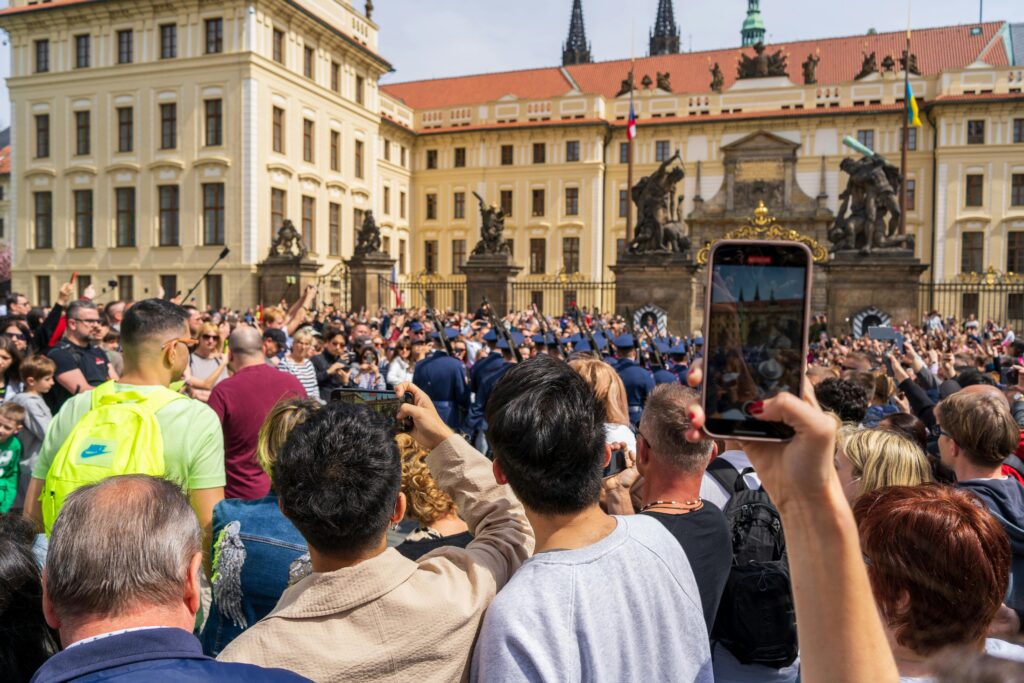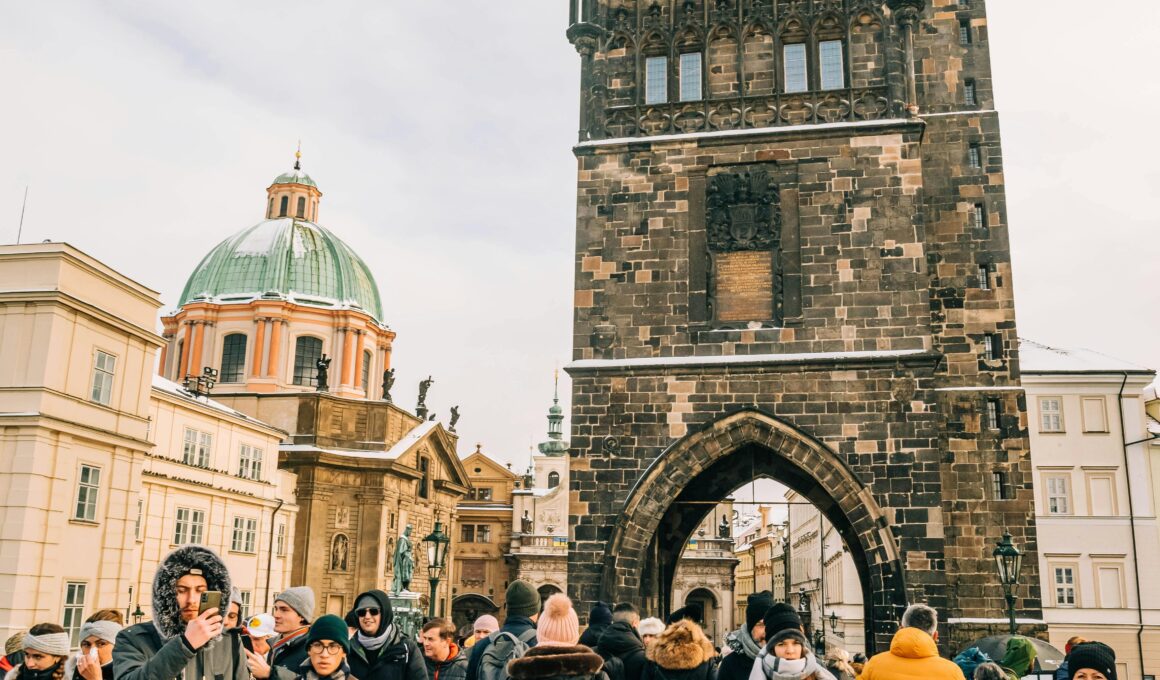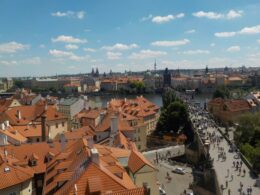Table of contents Show
Prague’s population is just as interesting and varied as its famous buildings and winding alleys. The people who live here are the engine that drives the city’s culture, economics, and sense of self, from the little streets of the Old Town to the wide avenues of the New Town. This essay will delve into the rich mosaic of Prague’s population, looking at its origins, current trends, and potential for the future.
Migration, invasion, and cultural interaction have shaped Prague’s population for ages. Prague attracted merchants, craftsmen, and settlers from across Europe as it expanded as a commercial powerhouse. A strategic location at the crossroads of trade routes allowed the city to exchange products, ideas, and people, enriching its culture and boosting its expansion.
Diversity characterizes Prague’s population. In the city, individuals of different nationalities, beliefs, and backgrounds have lived together for millennia. Prague’s complex traditions, dialects, and customs are a result of its diverse population of Czechs, Germans, Jews, and others. The international atmosphere, active arts scene, and great quality of life continue to lure different inhabitants and visitors to Prague.
Unlocking the Enigma: What is the current Population of Prague?

What is the population of Prague? The population of Prague in 2023 is 1 million 365.6 thousand persons. The Czech capital is the largest city in the country and one of the most populous in Central Europe. To comprehend Prague’s contemporary population, one must examine its growth and makeup.
Prague has attracted individuals from around the Czech Republic and beyond with its economic prospects, cultural attractions, and great quality of life. Residents from many origins and countries have moved to the city due to its strategic location at the crossroads of trade routes and its political, economic, and cultural importance. Prague is cosmopolitan due to its diverse languages, cultures, and traditions due to this immigration.
Prague’s population growth is driven by local and international migration. Rural and small-town residents go to Prague for better jobs, education, and facilities. Prague’s vibrant and inviting reputation draws people from neighboring nations and beyond. A constant flow of migrants makes the city diverse and vibrant.
Prague’s population dynamics include natural increase. Prague has maintained positive natural growth despite dropping birth rates across Europe due to improved healthcare, increased life expectancy, and a younger population than other European capitals. Economic, social, and cultural growth are possible with this demographic dividend.
Prague’s population is predicted to rise, but more slowly than in recent decades. Migration will continue to drive population expansion, but demographic trends including aging, declining birth rates, and international migration will also affect the city’s population dynamics. Prague can remain a vibrant, inclusive, and affluent metropolis for years by embracing its multicultural past, addressing urbanization, and investing in its inhabitants.
Finally, Prague’s population density reflects its role as a dynamic, international European metropolis. Prague attracts individuals from various backgrounds due to its rich history, cultural legacy, and economic prospects, shaping its growth, diversity, and identity.
Revealing Prague’s Living Mosaic – Different Ethnicities
The people in Prague comprises of ethnic groups that lend depth, flavor, and complexity to its character beneath its gorgeous veneer. Let’s examine Prague’s diverse ethnicities and their unique contributions:
Black Population in Prague
Compared to other major cities throughout the world, the Black population in Prague—the capital of the Czech Republic—is very tiny. The Black community in Prague adds to the cultural richness and social fabric of the city. It mostly consists of expats, students, professionals, and tourists from different African nations, but it also includes persons of African heritage from all over the globe. The Black population in Prague is active in many facets of city life, including education, work, arts and culture, sports, and community activities.
Indian Population in Prague
The Indian population in Prague is dynamic and increasing, adding to the city’s cultural diversity and economic vibrancy.
In the medieval periods, the monarchy of Bohemia traded with India in precious items and Indian spices. While accurate numbers on the Indian population in Prague are not readily available, it is clear that Indians have a strong and noticeable presence in the city.
Jewish Population in Prague
There has been a sizable Jewish population in Prague since the Middle Ages, making it home to one of Europe’s most active Jewish communities. There are approximately 1,600 Jews residing in Prague out of 3,000 to 5,000 in the Czech Republic, according to the Federation of Jewish Communities in the year 2022.
A large Jewish population flourished in medieval Prague as its inhabitants made their home there. As a result of their contributions to the city’s intellectual, artistic, and economic life, Prague flourished. Josefov, or the Jewish Quarter, had synagogues, schools, companies, and other social institutions, and it became an important hub for Jewish life.
Asian Population in Prague
Many different Asian countries are represented in the diverse and heterogeneous Asian population in Prague. Some of these countries are Japan, China, Vietnam, and South Korea. As a result of being recognized as victims of the Vietnam War in the 1960s and 1970s, the majority of Asians in the Czech Republic are Vietnamese. As of today, Prague is officially home to 11,000 Vietnamese. Roughly one percent of Prague’s population lives there. Also, out of 10.7 million, they have 100,000—1% in Czechia.
Chinese Population in Prague
The Czech Republic had 10.7 million inhabitants in 2021 with a GDP per capita of US$26,379; 8,263 Chinese citizens, or 0.07% of the total, made up the population.People from all around China, including Taiwan, Hong Kong, and the mainland, make up Prague’s vibrant Chinese population.
Many members of the Chinese population in Prague are active in the city’s commercial and academic sectors as well as its cultural and social events. Businesses, restaurants, and cultural groups in the city that are owned by Chinese people enrich the multicultural scene by providing locals and tourists with authentic Chinese food, culture, and celebrations.
German Population in Prague
Due to its closeness to German-speaking countries and status as a cultural and economic center in Central Europe, Prague has always had strong ties to German-speaking inhabitants.
Karlovy Vary Region has 4,431 Germans (1.5% of Prague’s population).
Prague, Czech Republic and several German-speaking provinces were part of the Holy Roman Empire throughout the Middle Ages. In Prague, German settlers, traders, and craftsmen built communities and helped the city grow. German influence on Prague’s architecture, culture, and government was especially strong under Charles IV, the Holy Roman Emperor.
Recent political events like World War II and the Cold War affected Prague’s German population. Many Czechs and Germans were expelled and persecuted in Nazi-occupied Prague during World War II. The German population in Prague declined after the war as many Germans were banished or fled.
Exploring How Prague’s Population Grows
Prague, one of Europe’s most treasured cities, has had steady population expansion throughout the years, spurred by a variety of reasons that include:
Economic possibilities
Prague’s thriving economy draws people from all over the Czech Republic and the world in pursuit of work, business possibilities, and professional progression.
Quality of Life
The captivating meaning of Prague captures the city’s allure as a place to live and visit thanks to its outstanding quality of life, diverse cultural history, beautiful architecture, and vibrant arts scene.
Educational Opportunities
Prague is home to major colleges and educational institutes that attract students from all around the country and abroad.
Urbanization
As rural populations drop, people move to metropolitan areas such as Prague in quest of greater opportunities, facilities, and services.
Migration
Domestic and international migration contribute significantly to Prague’s population growth, with people moving to the city for a variety of reasons, including employment, education, and lifestyle.
Tourism
Prague’s reputation as a famous tourist destination draws millions of tourists each year, some of whom may choose to stay and contribute to the city’s population increase.
Infrastructure Development
Investments in infrastructure, transportation, and urban development make Prague a more attractive location to live and work.
Government Policies
Policies and initiatives designed to recruit qualified workers, entrepreneurs, and investors help to boost the city’s population growth.
Cultural Diversity
Prague’s diverse population, which includes people from all origins and nations, contributes to the city’s energy and appeal.
Prague population in 2024, 2025 and further – Evolution
Prague, the Czech Republic’s capital, continues to evolve due to economic possibilities, urbanization, migration, and demographics as of 2024. Policymakers, urban planners, and inhabitants must understand Prague’s population growth tendencies to prepare for the future and address new issues.
Prague has become a vibrant economic center, attracting enterprises, entrepreneurs, and experts from across the country and outside. Technology, banking, tourism, and manufacturing make up the city’s diverse economy, which provides many jobs and a good level of living. Thus, Prague’s population has grown as more people move there for greater chances and services.
Urbanization is another major factor in Prague’s population rise. Urban communities like Prague attract individuals seeking jobs, education, healthcare, and other amenities as rural populations shrink. As more people move to Prague, new residential buildings, commercial centers, and infrastructure projects have grown the city.
Prague’s population is also shaped by local and international migration. Many young professionals, students, and expats flock to Prague for employment or education, making it culturally diverse and cosmopolitan. Retirees and second-home owners are drawn to Prague’s historic attractiveness, low cost of living, and good quality of life, fueling population increase.
Prague’s population is predicted to rise further, albeit more slowly, until 2025 and beyond. Sustainable urban planning, infrastructure investment, and policies that promote economic development, social inclusion, and environmental sustainability are crucial for managing population increase and ensuring Prague’s global success. Prague can adapt to population change and become a thriving metropolis by embracing innovation, diversity, and resilience.





